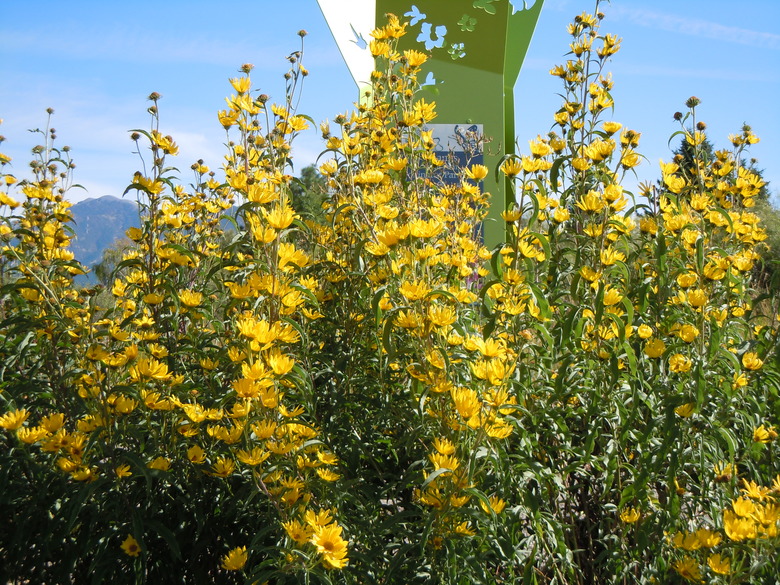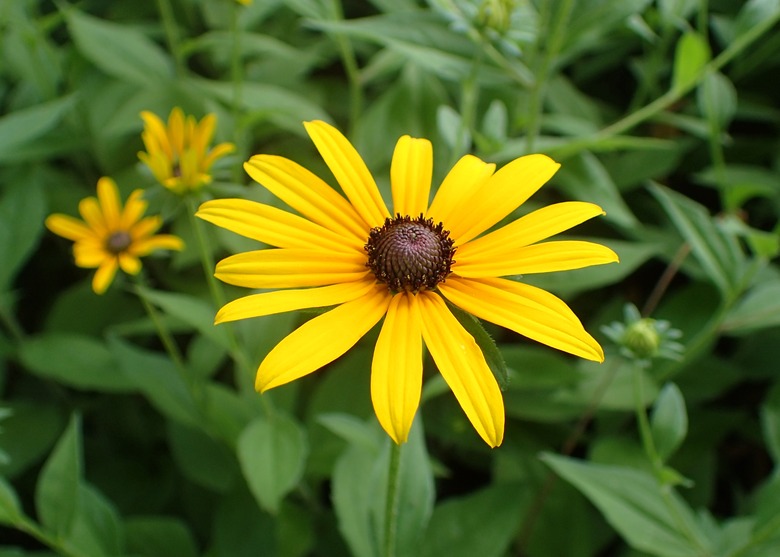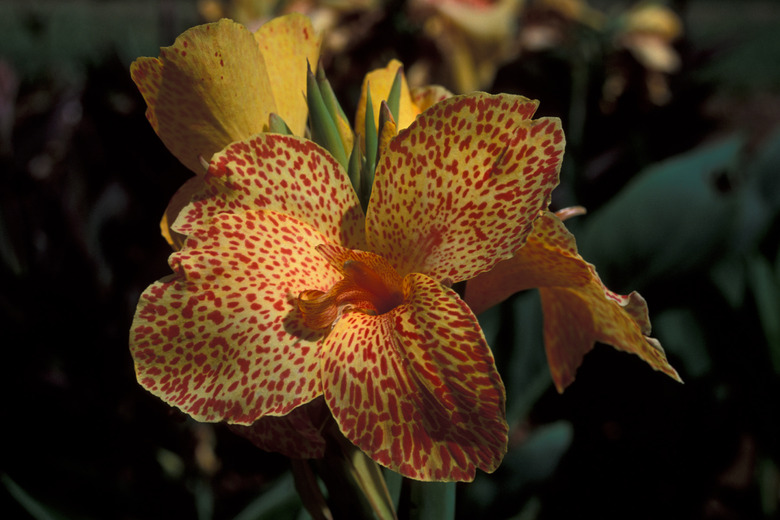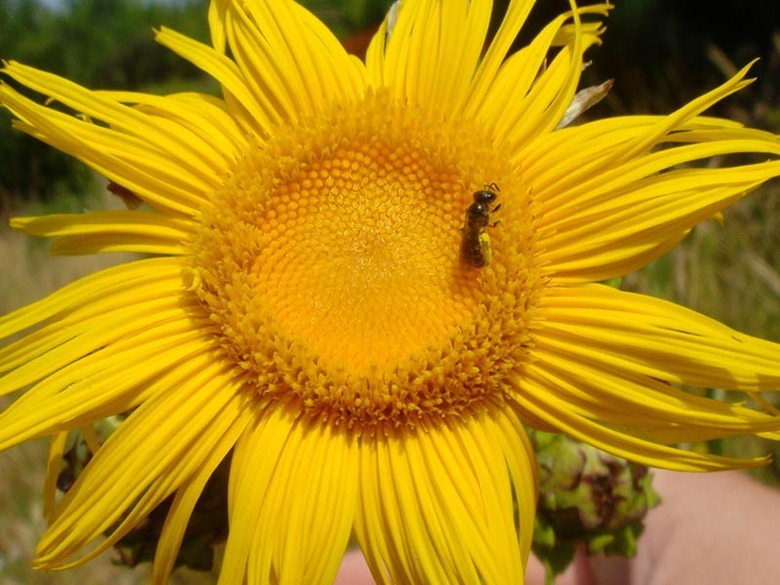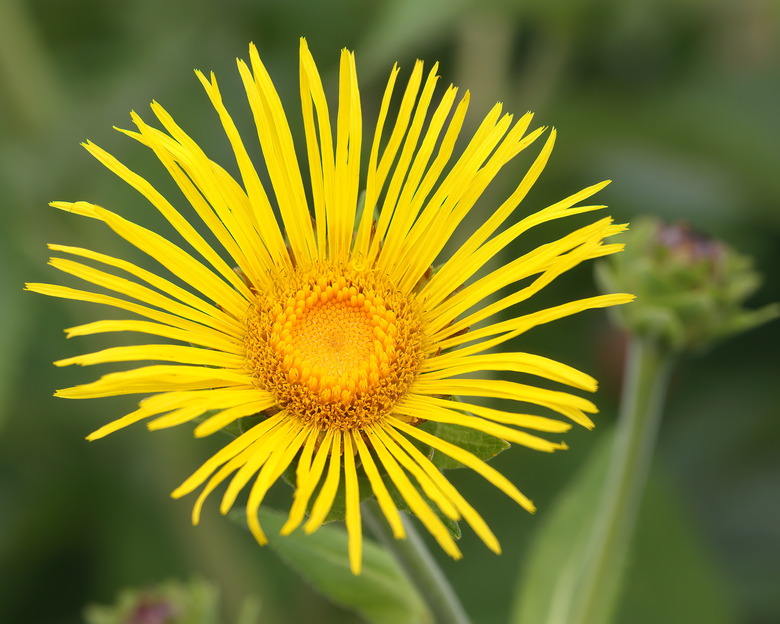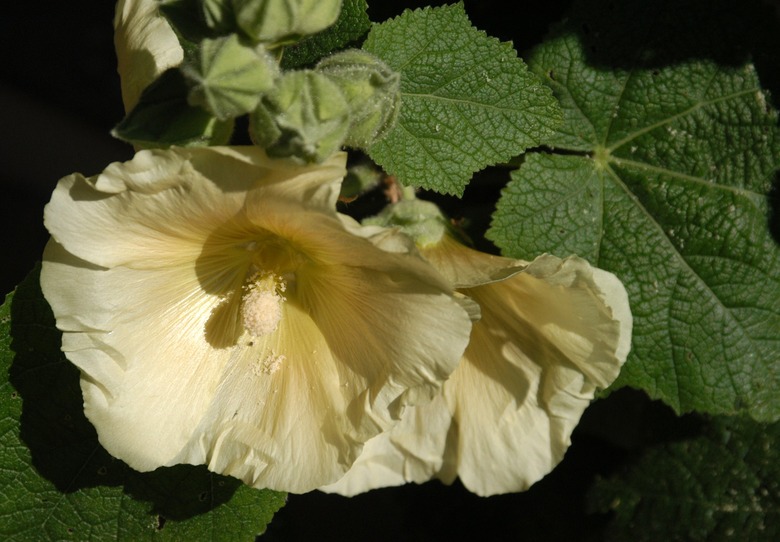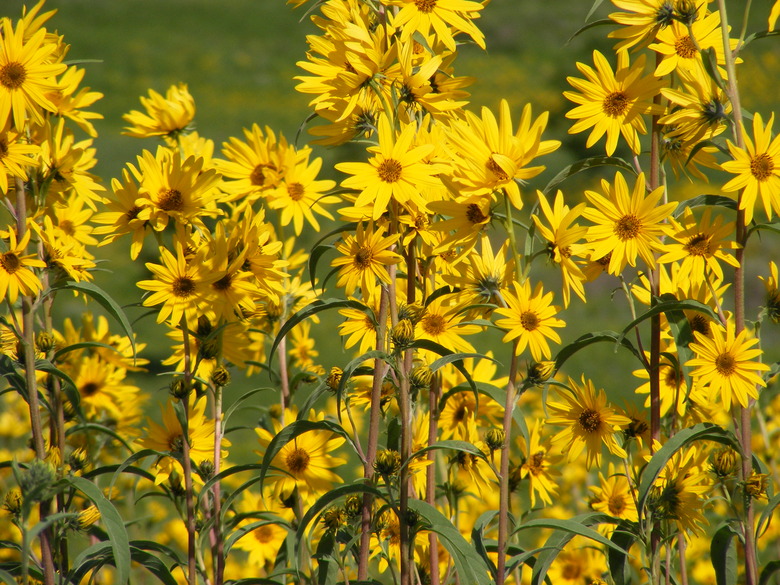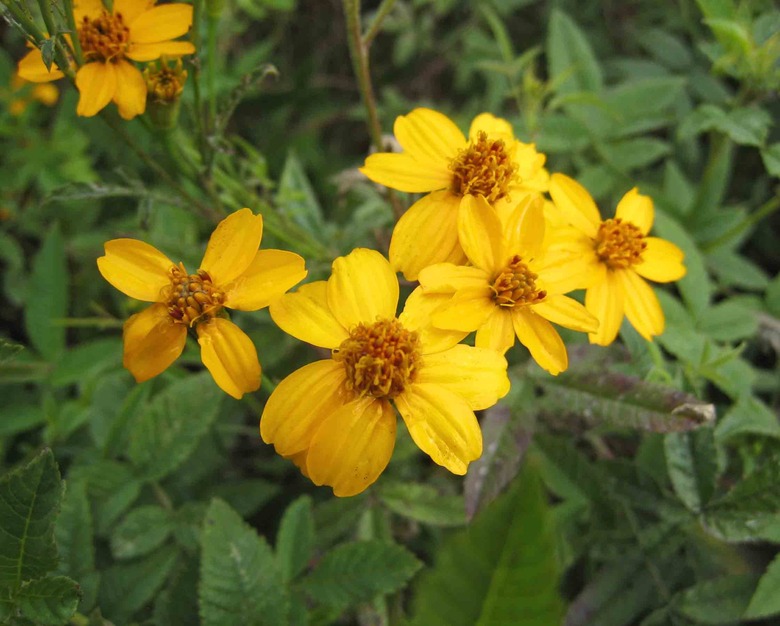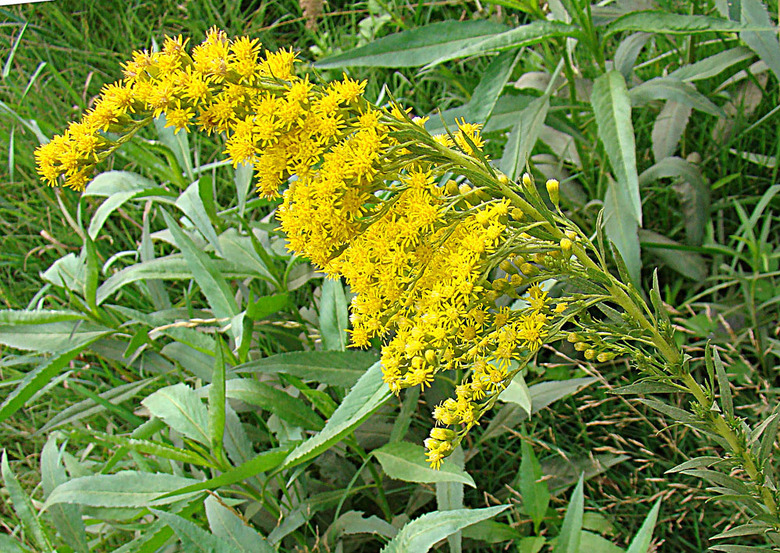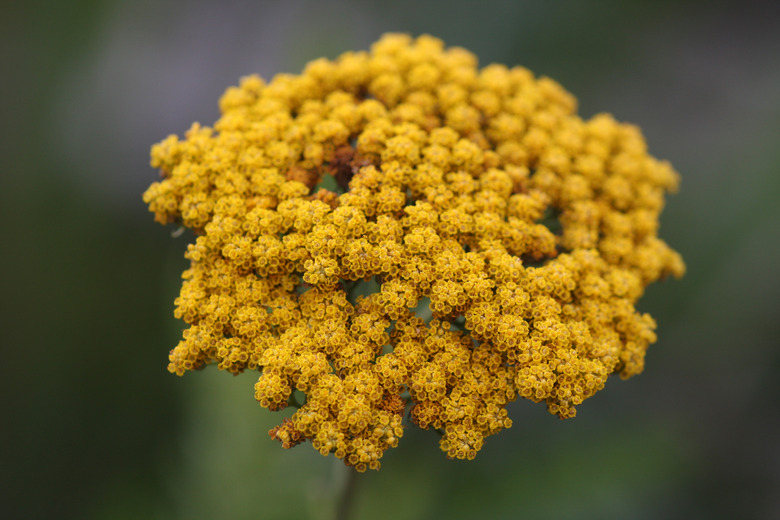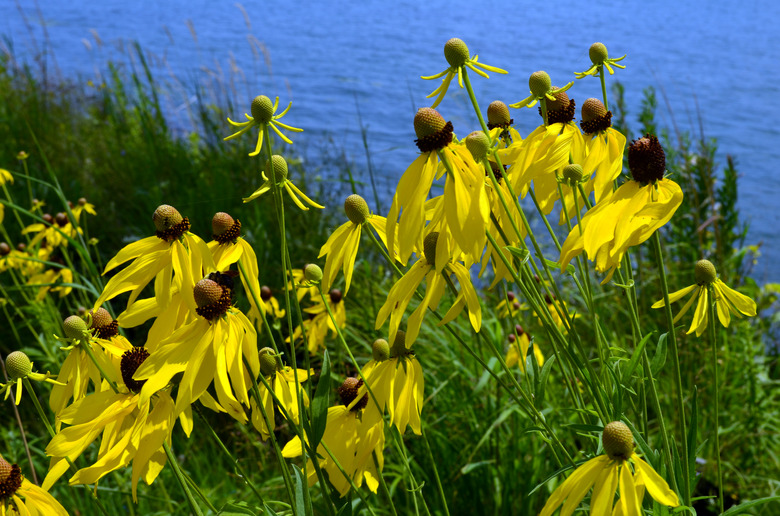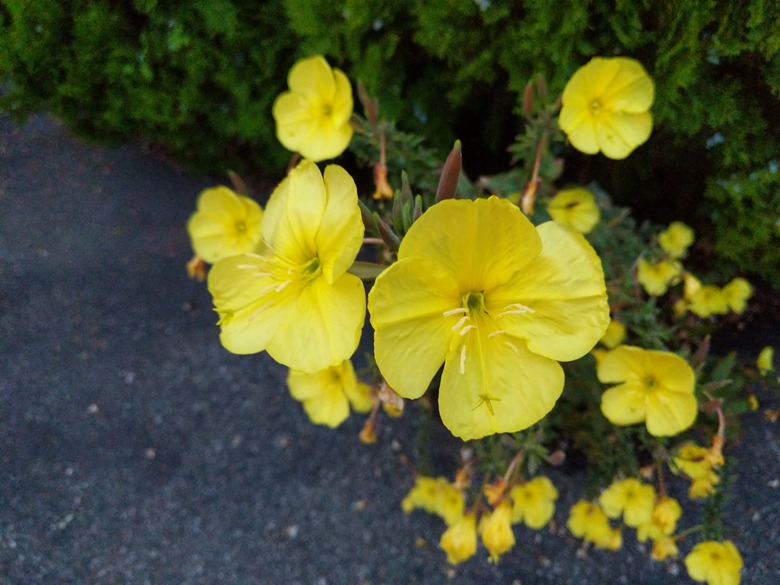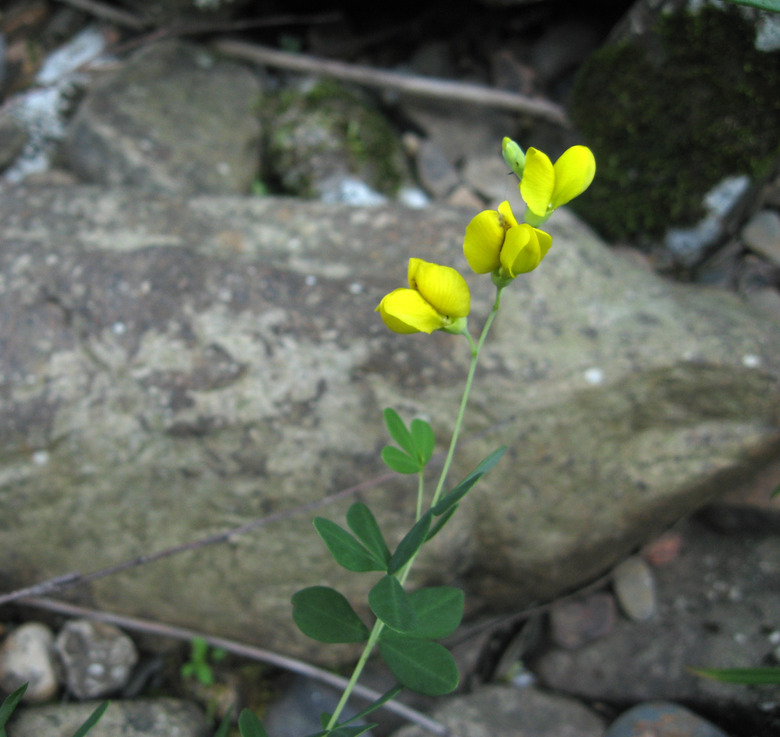Tall Yellow Perennial Flowers
A garden filled with tall yellow perennial flowers ranging from 3 to 6 feet or more in height becomes a bright focal point in the landscape. Dress up a drab patio, fence or wall with layers of single, semidouble and double flowering perennials. The blossom colors may range from pale to brilliant yellow to golden yellow-orange, providing a warm, sunny glow for homeowners and pedestrians to enjoy from spring through fall.
Flowering Perennial Plants
Perennials are plants that live for multiple years. Some feature foliage year round, while others die back and then regrow from the roots in spring.
Every plant has a range of U.S. Department of Agriculture plant hardiness zones where they thrive, though some may need winter protection in the lowest climate zones. Other considerations before planting a particular species or cultivar include its size; bloom time; environmental requirements, such as sun or shade; soil types; and water needs, as well as its ability to reseed and any invasive tendencies.
Black-Eyed Susan
The black-eyed Susan, a North American wildflower, was originally found in the Eastern U.S. but is now found across the continent. Often planted as an annual because it blooms in the first year, it is actually a biennial or short-lived perennial.
While the original wildflowers feature 2- to 4-inch-wide, daisy-like flowers consisting of a raised brown center surrounded by 10 to 20 bright yellow petals, plant breeders have developed cultivars with pale yellow, yellow-orange, yellow and mahogany or cherry red blossoms.
Combine them with white Shasta daisies (Leucanthemum x superbum, USDA zones 4 to 9) for continuous summer flowers. Deadhead regularly to keep the plants flowering from midsummer through fall and to prevent unwanted reseeding in the garden.
- **Scientific Name:** Rudbeckia hirta
- **Common Names:** Black-eyed Susan, gloriosa daisy
- **Type:** Biennial, short-lived perennial
- **Size:** 2 to 4 feet tall and 1 to 2 feet wide
- **Light:** Full sun to partial shade
- **Soil:** All well-draining soil types
- **Water:** Medium to moist, somewhat drought tolerant
- **USDA Zones:** 3 to 8
Canna Lily
Add tropical flair to the landscape with the large, banana-like leaves and exotic 4- to 8-inch-long flowers of cannas. Available in flower colors ranging from white to yellow to pink to red or variegated with dark green or bronze leaves, cannas thrive in warm and sunny gardens.
Tall yellow cultivars include Cannova Lemon, which features green leaves and yellow flowers, and Ermine, which has creamy white flowers with pale yellow centers. Deadhead as the flowers fade to encourage blooming through summer and fall and lift the rhizomes for winter storage in USDA zones 7 and below.
- **Scientific Name:** Canna x generalis
- **Common Names:** Canna, canna lily, garden canna
- **Type:** Perennial rhizome
- **Size:** 2 to 6 feet tall and 1 to 2 feet wide
- **Light:** Full sun to partial shade
- **Soil:** Neutral to acidic, well-draining, organically rich soils
- **Water:** Medium to moist, tolerates occasional dry and wet conditions
- **USDA Zones:** 8 to 11
Giant Fleabane or Inula
Giant fleabane thrives in well-draining but moist locations in the landscape. Put it at the back of the garden bed to form a backdrop for shorter annuals and perennials.
The 6-inch-wide clusters of bright yellow to yellow-orange daisy-like flowers appear from mid to late summer above the 3-foot-long, dock-like leaves. Cut back the upright purplish stems after flowering and divide clumps in spring.
- **Scientific Name:** Inula magnifica
- **Common Names:** Giant fleabane, giant inula, inula, magnificent elecampone
- **Type:** Deciduous perennial
- **Size:** 5 to 6 feet tall and 2 to 4 feet wide
- **Light:** Partial shade
- **Soil:** All well-draining soil types
- **Water:** Medium to moist, tolerates wet soils
- **USDA Zones:** 5 to 8
Inula Helenium or Elecampane
While weedy, elecampane thrives in full sun to part shade. The 2- to 3-inch-wide bright yellow flowers feature a broad disc of small dark yellow blossoms surrounded by thin yellow rays. The rough, hairy leaves are toothed, growing 1 to 2 feet long.
Plant them in the back of the garden bed and cut them back after flowering. Divide clumps in spring or grow new plants from seed.
- **Scientific Name:** Inula helenium
- **Common Names:** Elecampane, elfdock, horse-heal
- **Type:** Deciduous biennial or perennial
- **Size:** 2 to 6 feet tall and 2 to 3 feet wide
- **Light:** Full sun to part shade
- **Soil:** All well-draining soil types
- **Water:** Medium to moist
- **USDA Zones:** 3 to 7
Hollyhock or Alcea Rosea
A cottage garden favorite, hollyhocks are available in flower colors ranging from white to pastel pinks, lavenders or yellows to burgundy reds from early to late summer.
Tall yellow cultivars include Russian Yellow, with large single flowers, and Chater's Yellow, with fluffy double flowers. The lower leaves tend to wither when hot weather appears, so plant at the back of the flower bed so shorter yellow-flowering annuals and perennials like a daylily (Hemerocallis spp., USDA zones 3 to 9) can conceal the bare stems.
Deadhead the flowers before they go to seed or allow the last blossoms to set seed and then save them for planting in spring or allow them to reseed in the garden.
- **Scientific Name:** Alcea rosea, formerly Althaea mexicana Kunze and Althaea rosea
- **Common Names:** Hollyhock
- **Type:** Biennial or perennial
- **Size:** 5 to 8 feet tall and 1 to 2 feet wide
- **Light:** Full sun
- **Soil:** All well-draining soil types
- **Water:** Medium to moist, tolerates occasional dry conditions
- **USDA Zones:** 2 to 9
Maximilian Sunflower Plant
North America's native sunflower prefers moist clay soils but is often found in dry, open areas and alongside roads. The 2- to 3-inch-wide sunflowers appear on short stalks on tall, hairy stems from mid-summer to fall.
Like other sunflowers, the tiny dark yellow blossoms in the center are surrounded by 7 to 20 yellow petals. The long and narrow 2- to 10-inch-long leaves are grayish-green and may turn purple as daylight shortens in fall. The tallest plants may need staking to help keep them upright.
- **Scientific Name:** Helianthus maximiliani
- **Common Names:** Maximilian sunflower, Michaelmas daisy
- **Type:** Deciduous perennial
- **Size:** 3 to 10 feet tall and 2 to 4 feet wide
- **Light:** Full sun
- **Soil:** All well-draining soil types
- **Water:** Dry to medium
- **USDA Zones:** 4 to 9
Mexican Bush Marigold
Native to the high deserts of southern Arizona and northern Mexico, the Mexican bush marigold struggles in the extreme heat of the low desert. Plant them in partially shaded locations with morning sun in the hottest climates and full sun in the colder climates.
Like other marigolds, the small yellow-orange single flowers and dark green leaves produce a strong lemon and mint scent. Put on gloves and a mask when pruning after the flowers fade in late spring or wait and remove any frost-damaged foliage when the weather warms and all chance of frost has passed.
- **Scientific Name:** Tagetes lemmonii
- **Common Names:** Copper Canyon daisy, Mexican bush marigold, Mount Lemmon marigold, shrub marigold, tangerine-scented marigold
- **Type:** Evergreen perennial
- **Size:** 5 to 8 feet tall and equally wide
- **Light:** Full to part sun
- **Soil:** All well-draining soils
- **Water:** Dry to medium
- **USDA Zones:** 8 to 11
Warning
When working around any marigold species, be careful when handling the leaves. Sensitive individuals may develop skin irritation ranging from a rash to blisters, especially when the sap-covered skin is exposed to sunlight. The strong scent of marigold plants can also irritate the eyes and nose.
Sweet or Anise-Scented Goldenrod
Also known as sweet goldenrod, anise-scented goldenrod provides nectar for a variety of native bees and butterflies as well as foliage for caterpillars and seeds for songbirds. The arching, plume-like clusters of tiny yellow to gold flowers cover the plants from summer through fall.
This clump-forming goldenrod is suitable for cottage, herb and butterfly gardens, as it is not an aggressively spreading species and is deer resistant.
- **Scientific Name:** Solidago chilensis, formerly Solidago odora
- **Common Names:** Anise goldenrod, anise-scented goldenrod, fragrant goldenrod, licorice goldenrod, sweet goldenrod
- **Type:** Perennial
- **Size:** 2 to 4 feet tall and 1 to 2 feet wide
- **Light:** Full sun to part shade
- **Soil:** All well-draining soil types
- **Water:** Medium to moist; tolerates occasional dry conditions
- **USDA Zones:** 4 to 9
Fernleaf Yarrow
Among the tallest of the yarrows, the fernleaf yarrow grows up to 4 feet tall with 4-inch-wide dense, flattened clusters of tiny, bright golden yellow flowers. Yarrow prefers medium soils; don't amend the garden bed with too much compost or add extra fertilizer, as these wildflowers may flop over if the soil is too moist or rich in nutrients.
The green, fern-like foliage has a strong, spicy scent. While Gold Plate and Cloth of Gold are two of the tallest cultivars, plant Coronation Gold to avoid volunteer seedlings in the garden.
- **Scientific Name:** Achillea filipendulina
- **Common Names:** Fernleaf yarrow, soldiers woundwort
- **Type:** Deciduous or semievergreen perennial
- **Size:** 3 to 5 feet tall and 2 to 3 feet wide
- **Light:** Full sun
- **Soil:** All well-draining soil types; prefers poor to medium fertility
- **Water:** Dry to medium; tolerates drought once established
- **USDA Zones:** 3 to 8
Yellow or Prairie Coneflower
The yellow or prairie coneflower thrives in the Central and Eastern U.S. in fields, meadows, prairies and dry woodlands with open canopies. The 1- to 3-inch-wide flowers feature a grayish central dome of tiny flowers surrounded by up to 13 yellow petals in summer.
This wildflower is tolerant of poor soils and drought; don't overwater or add too much fertilizer to the garden bed. Plant along the back of native or pollinator gardens to attract butterflies, bees and other pollinators.
- **Scientific Name:** Ratibida pinnata
- **Common Names:** Gray-headed coneflower, pinnate prairie coneflower, prairie coneflower, yellow coneflower
- **Type:** Perennial
- **Size:** 3 to 5 feet tall and 18 inches to 2 feet wide
- **Light:** Full sun to partial shade
- **Soil:** Poor to average loam to clay loam
- **Water:** Dry to medium; avoid overwatering
- **USDA Zones:** 3 to 8
Yellow Evening Primrose
A night-blooming biennial, evening primrose flowers open at dusk and close when the sunlight hits them in the morning. The plants produce a rosette of 4- to 8-inch-long and 2-inch-wide leaves in the first year of growth, and the 3- to 5-foot-tall flower stems rise in the second year of growth. A multitude of 1- to 2-inch bowl-shaped lemon-yellow blooms appear along the flower stem from spring through fall.
The light, lemony-scented flowers attract night-flying moths after dark and bees in the morning. Remove the fading flowers in summer and early fall before they set seed to encourage more blossoms.
- **Scientific Name:** Oenothera biennis
- **Common Names:** Evening primrose, yellow evening primrose
- **Type:** Biennial
- **Size:** 3 to 5 feet tall and 2 to 3 feet wide
- **Light:** Full sun to part shade
- **Soil:** All well-draining soil types
- **Water:** Medium; tolerates some drought
- **USDA Zones:** 4 to 9
Yellow Wild Indigo
This dainty yellow flower appears in late spring and early summer, rising from a mound of grayish-green clover-like leaves. The 1/2-inch-long lipped flowers grow in 4- to 5-inch-long clusters, which result in bean-like pods.
The flowers and green foliage are a food source for bees, butterflies and caterpillars, while the seeds attract birds and other wildlife from late summer to fall. Wild indigo prefers acidic, sandy soils.
Other members of the Baptisia species feature a variety of flower colors ranging from white to yellow to blue. The hybrid Baptisia Decadence series includes the yellow Lemon Meringue and yellow to pink Pink Lemonade. Both are hardy in USDA zones 4 through 9.
- **Scientific Name:** Baptisia tinctoria
- **Common Names:** Horseflyweed, rattleweed, shoofly, wild indigo
- **Type:** Deciduous perennial
- **Size:** 2 to 3 1/3 feet tall and 2 to 3 feet wide
- **Light:** Full sun to partial shade
- **Soil:** Acidic sandy soils
- **Water:** Moist; tolerates occasionally dry conditions
- **USDA Zones:** 3 to 9
References
- Missouri Botanical Garden: Helianthus Maximiliani
- Missouri Botanical Garden: Rudbeckia hirta
- North Carolina Extension Gardener Plant Toolbox: Canna x generalis
- Gardenia: Inula Magnifica (Magnificent Elecampane)
- Missouri Botanical Garden: Inula helenium
- North Carolina Extension Gardener Plant Toolbox: Alcea rosea
- Arizona State University: Tagetes lemmonii
- North Carolina Extension Gardener Plant Toolbox: Solidago chilensis
- North Carolina Extension Gardener Plant Toolbox: Achillea filipendulina
- Missouri Botanical Garden: Ratibida pinnata
- Missouri Botanical Garden: Oenothera biennis
- North Carolina Extension Gardener Plant Toolbox: Baptisia tinctoria
